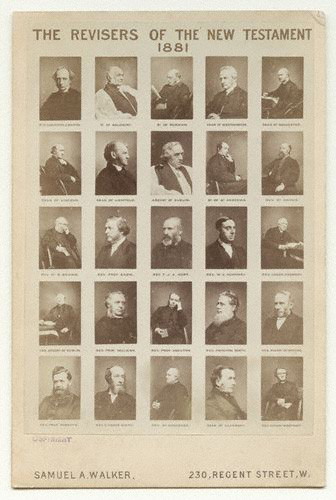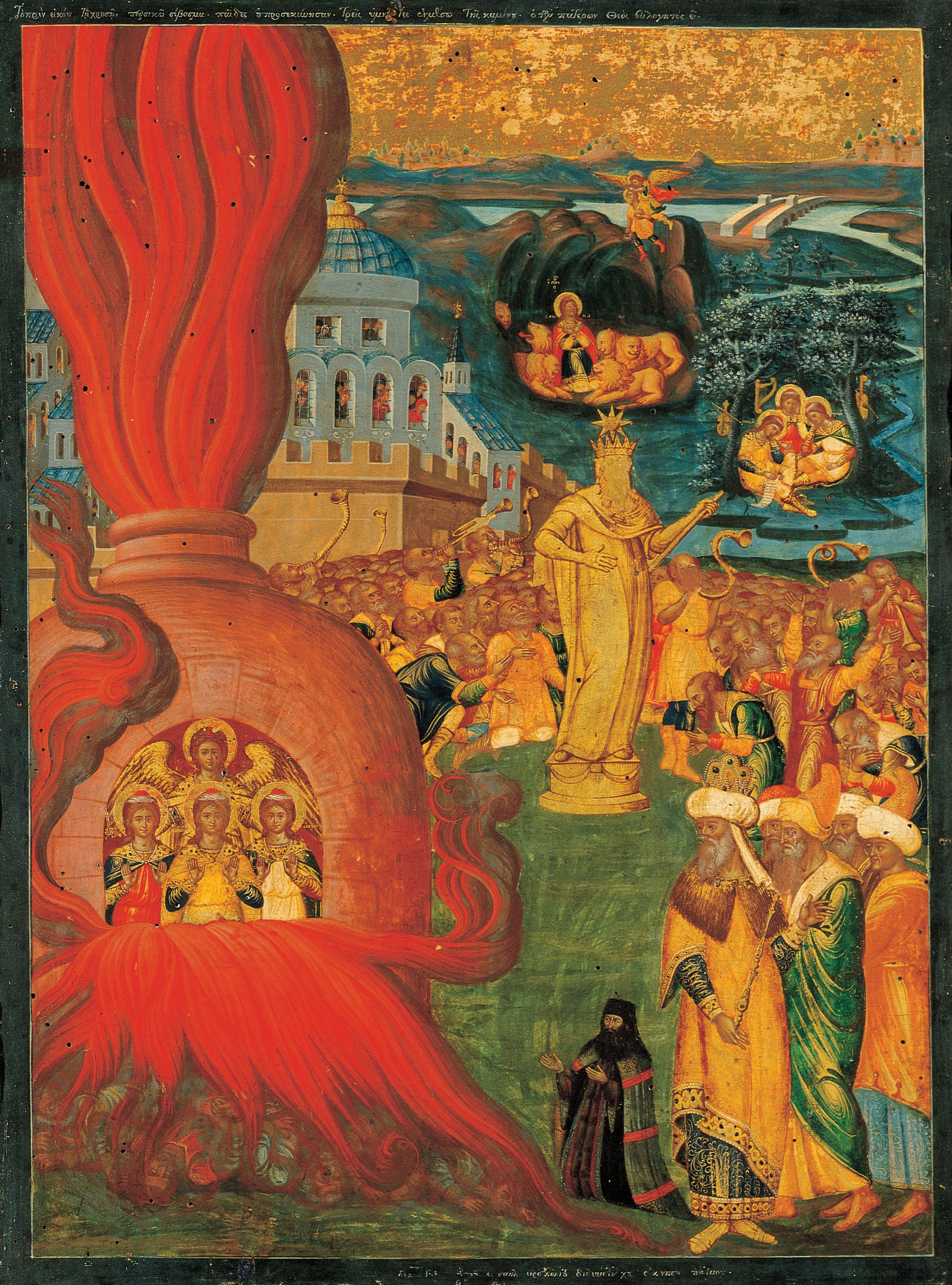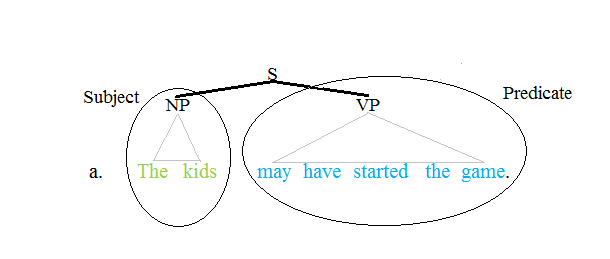|
Ego Eimi
''Ego eimi'' ( grc, ἐγώ εἰμι ) "I am", "I exist", is the first person singular present active indicative of the verb "to be" in ancient Greek. The use of this phrase in some of the uses found in the Gospel of John is considered to have theological significance by many Christians. Classical Greek When used as a copula, with a predicate, "I am X", then usage is equivalent to English. When used alone, without a predicate, "I am", "he is", "they are", typically mean "I exist" etc. *Homer ''Odyssey'' 15:433 ‘Wouldest thou then return again with us to thy home, that thou mayest see the high-roofed house of thy father and mother, and see them too? For of a truth they still live (''eisi'', 3rd person plural of ''eimi''), and are accounted rich.’ This is so unless there is an implied predicate in immediate context. Koine Greek Use without a predicate in Hellenistic Greek is largely consistent with earlier 'classical' use, even in Jewish texts: *Septuagint Exodus 3:14 "An ... [...More Info...] [...Related Items...] OR: [Wikipedia] [Google] [Baidu] |
Grammatical Person
In linguistics, grammatical person is the grammatical distinction between deictic references to participant(s) in an event; typically the distinction is between the speaker ( first person), the addressee ( second person), and others ( third person). A language's set of ''personal'' pronouns are defined by grammatical person, but other pronouns would not. ''First person'' includes the speaker (English: ''I'', ''we'', ''me'', and ''us''), ''second person'' is the person or people spoken to (English: ''you''), and ''third person'' includes all that are not listed above (English: ''he'', ''she'', ''it'', ''they'', ''him'', ''her'', ''them''). It also frequently affects verbs, and sometimes nouns or possessive relationships. Related classifications Number In Indo-European languages, first-, second-, and third-person pronouns are typically also marked for singular and plural forms, and sometimes dual form as well (grammatical number). Inclusive/exclusive distinction Some ot ... [...More Info...] [...Related Items...] OR: [Wikipedia] [Google] [Baidu] |
King James Version
The King James Version (KJV), also the King James Bible (KJB) and the Authorized Version, is an Bible translations into English, English translation of the Christian Bible for the Church of England, which was commissioned in 1604 and published in 1611, by sponsorship of King James VI and I. The List of books of the King James Version, 80 books of the King James Version include 39 books of the Old Testament, an Intertestamental period, intertestamental section containing 14 books of what Protestantism, Protestants consider the Biblical apocrypha#King James Version, Apocrypha, and the 27 books of the New Testament. Noted for its "majesty of style", the King James Version has been described as one of the most important books in English culture and a driving force in the shaping of the English-speaking world. The KJV was first printed by John Norton and Robert Barker (printer), Robert Barker, who both held the post of the King's Printer, and was the third translation into Englis ... [...More Info...] [...Related Items...] OR: [Wikipedia] [Google] [Baidu] |
English Standard Version
The English Standard Version (ESV) is an English translation of the Bible. Published in 2001 by Crossway, the ESV was "created by a team of more than 100 leading evangelical scholars and pastors." The ESV relies on recently published critical editions of the original Hebrew and Greek texts. Crossway claims that the ESV continues a legacy of precision and faithfulness in English translation of the original text. It describes the ESV as a translation that "emphasizes 'word-for-word' accuracy, literary excellence, and depth of meaning." It also describes the ESV as a translation that adheres to an "essentially literal" translation philosophy, taking into account "differences in grammar, syntax, and idiom between current literary English and the original languages." Since publication, the ESV has been endorsed by numerous evangelical pastors and theologians, including John Piper, R. C. Sproul, and Kevin DeYoung. As of July 2015, over 100 million printed copies of the translat ... [...More Info...] [...Related Items...] OR: [Wikipedia] [Google] [Baidu] |
NRSV
The New Revised Standard Version (NRSV) is an English translation of the Bible published in 1989 by the National Council of Churches.Preface to the NRSV from the website The NRSV was intended as a translation to serve devotional, liturgical and scholarly needs of the broadest possible range of Christian religious adherents. At present, the New Revised Standard Version is the version most commonly preferred by ; this is due to its basis on what are often considered the oldest and most reliable manusc ... [...More Info...] [...Related Items...] OR: [Wikipedia] [Google] [Baidu] |
Revised Standard Version
The Revised Standard Version (RSV) is an English translation of the Bible published in 1952 by the Division of Christian Education of the National Council of the Churches of Christ in the USA. This translation itself is a revision of the American Standard Version (ASV) of 1901, and was intended to be a readable and literally accurate modern English translation which aimed to "preserve all that is best in the English Bible as it has been known and used through the centuries" and "to put the message of the Bible in simple, enduring words that are worthy to stand in the great Tyndale- King James tradition." The RSV was the first translation of the Bible to make use of the Dead Sea Scroll of Isaiah, a development considered "revolutionary" in the academic field of biblical scholarship. The New Testament was first published in 1946, the Old Testament in 1952, and the Apocrypha in 1957; the New Testament was revised in 1971. The original '' Revised Standard Version, Catholic Edi ... [...More Info...] [...Related Items...] OR: [Wikipedia] [Google] [Baidu] |
English Revised Version
The Revised Version (RV) or English Revised Version (ERV) of the Bible is a late 19th-century British revision of the King James Version. It was the first and remains the only officially authorised and recognised revision of the King James Version in Great Britain. The work was entrusted to over 50 scholars from various denominations in Great Britain. American scholars were invited to co-operate, by correspondence.Revised Version - CAMBRIDGE - At the University Press - London: Cambridge University Press, 200 Euston Road, N.W., Synopsis Its New Testament was published in 1881, its Old Testament in 1885, and its Apocrypha in 1894. The best known of the translation committee members were Brooke Foss Westcott and Fenton John Anthony Hort; their fiercest critics of that period were John William Burgon and George Saintsbury. Features The New Testament revision company was commissioned in 1870 by the convocation of Canterbury. Their stated aim was "to adapt King James' version to ... [...More Info...] [...Related Items...] OR: [Wikipedia] [Google] [Baidu] |
King James Bible
The King James Version (KJV), also the King James Bible (KJB) and the Authorized Version, is an English translation of the Christian Bible for the Church of England, which was commissioned in 1604 and published in 1611, by sponsorship of King James VI and I. The 80 books of the King James Version include 39 books of the Old Testament, an intertestamental section containing 14 books of what Protestants consider the Apocrypha, and the 27 books of the New Testament. Noted for its "majesty of style", the King James Version has been described as one of the most important books in English culture and a driving force in the shaping of the English-speaking world. The KJV was first printed by John Norton and Robert Barker, who both held the post of the King's Printer, and was the third translation into English language approved by the English Church authorities: The first had been the Great Bible, commissioned in the reign of King Henry VIII (1535), and the second had been the ... [...More Info...] [...Related Items...] OR: [Wikipedia] [Google] [Baidu] |
Daniel B
''Daniel'' is an anonymous Old English poem based loosely on the Biblical Book of Daniel, found in the Junius Manuscript. The author and the date of ''Daniel'' are unknown. Critics have argued that Cædmon is the author of the poem, but this theory has been since disproved. ''Daniel'', as it is preserved, is 764 lines long. There have been numerous arguments that there was originally more to this poem than survives today. The majority of scholars, however, dismiss these arguments with the evidence that the text finishes at the bottom of a page, and that there is a simple point, which translators assume indicates the end of a complete sentence. ''Daniel'' contains a plethora of lines which Old English scholars refer to as “hypermetric” or long. Daniel is one of the four major Old Testament prophets, along with Isaiah, Jeremiah, and Ezekiel. The poet even changed the meaning of the story from remaining faithful while you are being persecuted to a story dealing with pride, which ... [...More Info...] [...Related Items...] OR: [Wikipedia] [Google] [Baidu] |
Predicate (grammar)
The term predicate is used in one of two ways in linguistics and its subfields. The first defines a predicate as everything in a standard declarative sentence except the subject, and the other views it as just the main content verb or associated predicative expression of a clause. Thus, by the first definition the predicate of the sentence ''Frank likes cake'' is ''likes cake''. By the second definition, the predicate of the same sentence is just the content verb ''likes'', whereby ''Frank'' and ''cake'' are the arguments of this predicate. Differences between these two definitions can lead to confusion. Syntax Traditional grammar The notion of a predicate in traditional grammar traces back to Aristotelian logic. A predicate is seen as a property that a subject has or is characterized by. A predicate is therefore an expression that can be ''true of'' something. Thus, the expression "is moving" is true of anything that is moving. This classical understanding of predicates ... [...More Info...] [...Related Items...] OR: [Wikipedia] [Google] [Baidu] |
Sacral
Sacral may refer to: *Sacred Sacred describes something that is dedicated or set apart for the service or worship of a deity; is considered worthy of spiritual respect or devotion; or inspires awe or reverence among believers. The property is often ascribed to objects ( ..., associated with divinity and considered worthy of spiritual respect or devotion *Of the sacrum, a large, triangular bone at the base of the spine See also * {{disambiguation ... [...More Info...] [...Related Items...] OR: [Wikipedia] [Google] [Baidu] |
Raymond E
Raymond is a male given name. It was borrowed into English from French (older French spellings were Reimund and Raimund, whereas the modern English and French spellings are identical). It originated as the Germanic ᚱᚨᚷᛁᚾᛗᚢᚾᛞ (''Raginmund'') or ᚱᛖᚷᛁᚾᛗᚢᚾᛞ (''Reginmund''). ''Ragin'' (Gothic) and ''regin'' ( Old German) meant "counsel". The Old High German ''mund'' originally meant "hand", but came to mean "protection". This etymology suggests that the name originated in the Early Middle Ages, possibly from Latin. Alternatively, the name can also be derived from Germanic Hraidmund, the first element being ''Hraid'', possibly meaning "fame" (compare ''Hrod'', found in names such as Robert, Roderick, Rudolph, Roland, Rodney and Roger) and ''mund'' meaning "protector". Despite the German and French origins of the English name, some of its early uses in English documents appear in Latinized form. As a surname, its first recorded appearance in ... [...More Info...] [...Related Items...] OR: [Wikipedia] [Google] [Baidu] |
Theophany
Theophany (from Ancient Greek , meaning "appearance of a deity") is a personal encounter with a deity, that is an event where the manifestation of a deity occurs in an observable way. Specifically, it "refers to the temporal and spatial manifestation of God in some tangible form." Where the deity does not take tangible form (outward manifestation), the broader term used for inward manifestation is divine revelation or divine inspiration. Where the spirit of god is manifest in a person the term used is divine incarnation, avatar or personification of the deity. Traditionally the term "theophany" was used to refer to appearances of the gods in ancient Greek and in Near Eastern religions. While the ''Iliad'' is the earliest source for descriptions of theophanies in classical antiquity (which occur throughout Greek mythology), probably the earliest description appears in the Epic of Gilgamesh. In the specific usage for Christians and Jews, with respect to the Bible, ''theophany'' ... [...More Info...] [...Related Items...] OR: [Wikipedia] [Google] [Baidu] |





